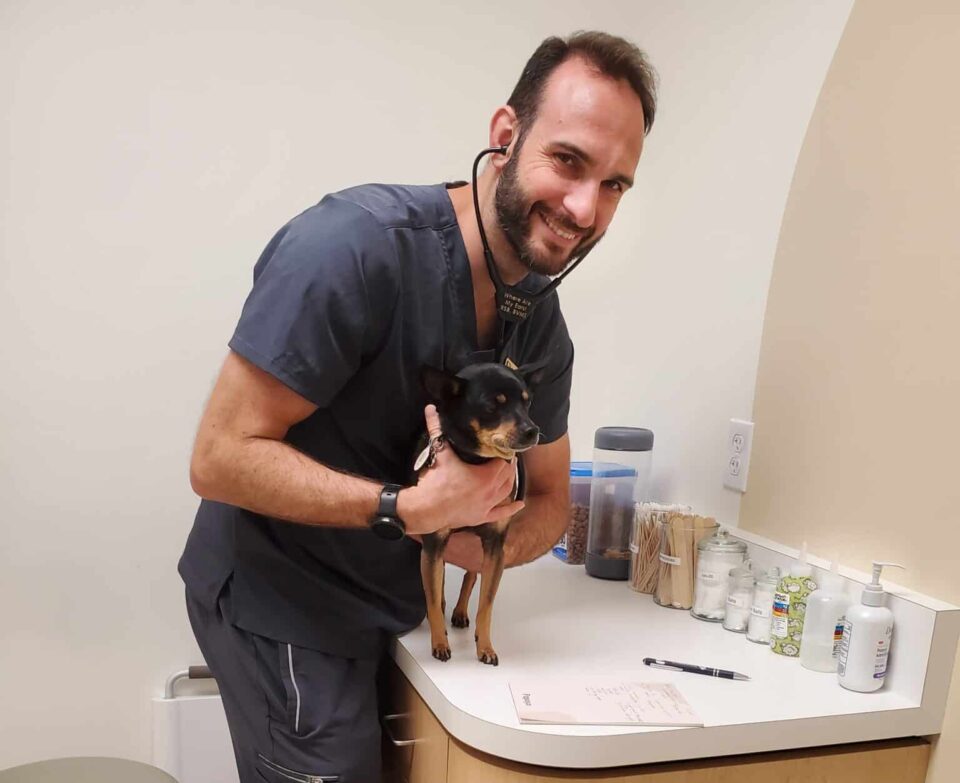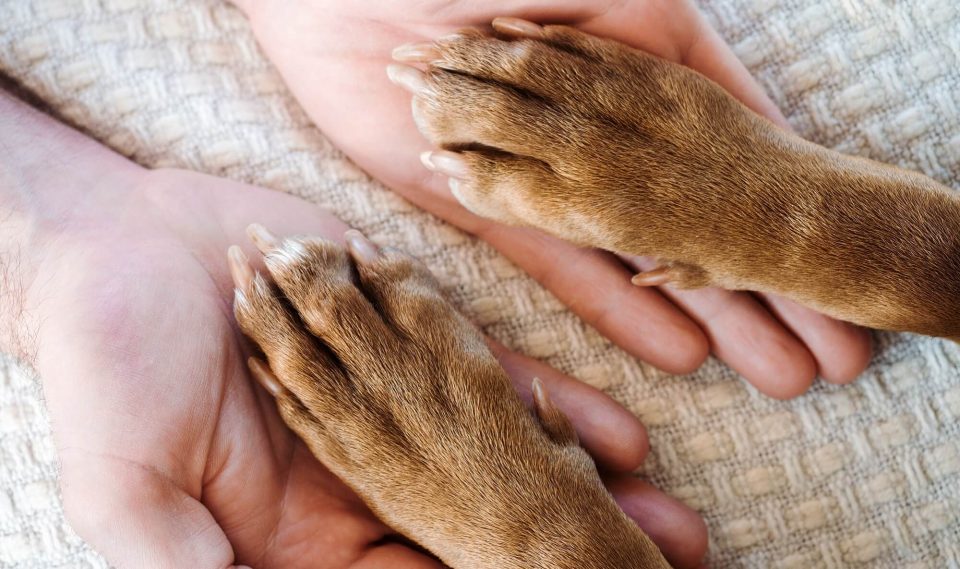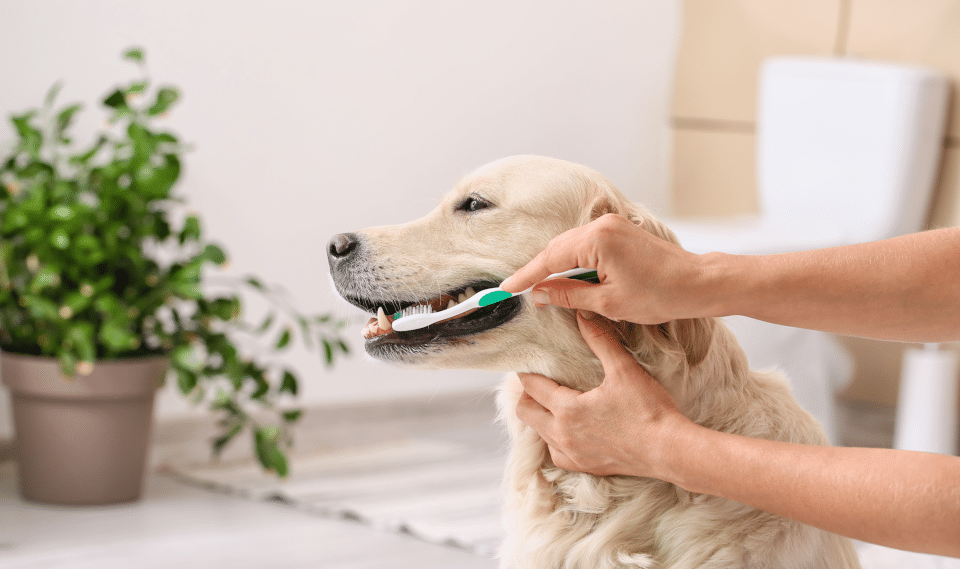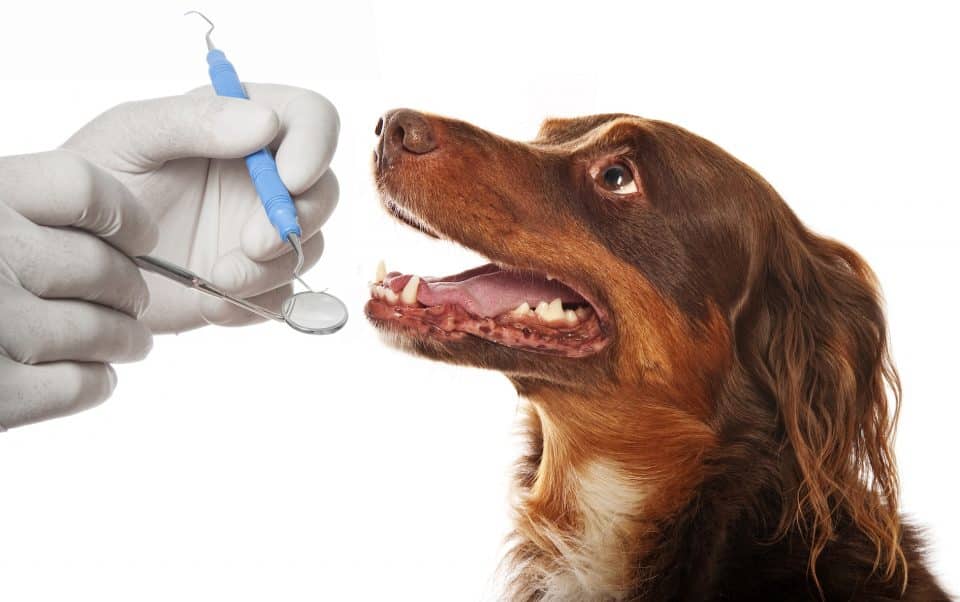Dental
8 min read
Dog & Cat Dental Diseases Symptoms & Treatments
Published on Jun 22, 2023
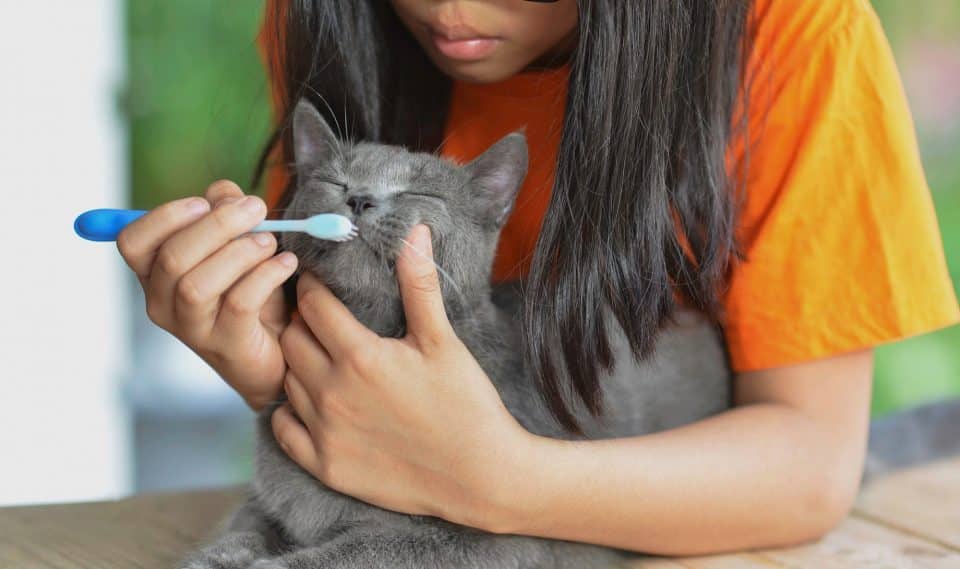
As pet owners, we love it when our dogs seem to smile at us or our cats greet us with scratchy tongues on our hands. And there’s nothing more instantly adorable (or relatable) than a pet tilting its head back and opening its mouth wide for a big yawn. Yet, dental health is an often overlooked aspect of pet health care.
So much of our pets’ quality of life is dependent on the condition of their teeth and mouths. Sometimes, bad breath in our cats and dogs isn’t just a sign that we should be brushing their teeth more (though you probably should be brushing their teeth more)—but also an indicator of a serious dental issue. In fact, more than 80% of dogs and 70% of cats show signs of dental disease by age three.1
In order to help you stay vigilant, we’ve compiled a list of common dental problems in dogs and cats, their symptoms, and their treatments.
What Are the General Symptoms of Pet Dental Disease?
Generally, cat dental disease symptoms and dog dental disease symptoms are pretty easy to spot. Or, in some cases, pretty easy to smell. Dogs and cats both tend to be experts at hiding their pain, so it’s important to be watchful.
Some common symptoms of a potential dental problem to look out for include:2,3,4
- Bad breath in dogs and cats – This is especially worrisome if you’re already brushing your pet’s teeth regularly.
- Pet is not chewing food – If your pet is reluctant to eat their dry food, that’s a giveaway that their mouth is giving them pain.
- Tooth discoloration – Yellow, brown, blue—all colors that don’t belong in your cat’s or dog’s mouth.
- Pawing at the mouth – If your pet frequently paws at their mouth, this is a sign that something is bothering them. It could be as simple as them having something stuck in their teeth (and no thumbs to operate a toothpick), but it may also indicate of something more serious.
- Drooling – If your dog or cat suddenly begins to drool, that likely means they can’t to comfortably close their mouth. If you observe any of these symptoms in your pet, it’s time to take action. Remember, it’s never too late to start brushing your pet’s teeth; one of the best ways to stave off dental health issues.
Common Pet Dental Diseases and Their Treatments
If you notice any of the symptoms above, your next step is to identify the cause of your pet’s dental distress and ensure they receive proper treatment. Let’s examine a few common causes more specific symptoms of dental disease cats may suffer from, as well as dental disease dogs can develop.
Gum Disease
Both cat gum disease and dog gum disease are the most common oral affliction for both dogs and cats.3 The condition occurs when debris and bacteria is allowed to accumulate on the teeth. Over the course of years, if allowed to develop unchecked, you may notice the yellowing of your pet’s teeth or a buildup of plaque.
The good news is that gum disease is easy to prevent and treatable, especially if caught early. The simplest treatment is the same for both dogs and cats—brushing your pet’s teeth. While this might require patience and bravery on both your pet’s part and your part, regular tooth brushing can eventually become a rewarding part of your pet’s routine.
If your pet is particularly opposed to at-home teeth cleanings (as many cats and some dogs can be), you may also want to consider seeking more frequent dental care from your pet’s veterinarian.
There are two types of gum disease: gingivitis and periodontitis. The former is less serious than the latter, but we’ll go over both below.
Gingivitis in Cats and Dogs
Gingivitis occurs when the buildup of plaque in your pet’s mouth inflames their gums.3 You will notice many symptoms discussed above, including bad breath and a reluctance to eat dry food. You might also observe:
- Discoloration of the gums – Your pet’s gums should be light pink. If they’re discolored dark red or purple, they may be experiencing gum disease.
- Bleeding of the gums – When experiencing gingivitis, your pet’s gums may be more prone to bleeding when touched.
- Turning their head while eating (Cats) – Cats may turn their head oddly to one side when suffering from gingivitis4
Treatment: If your pet’s gum disease has advanced to gingivitis, it is probably time for a deeper cleaning than the kind you can do at home. Your veterinarian should perform a deep cleaning, likely under anesthesia, and perhaps even apply a sealant to the teeth. An antibiotic might also be prescribed. Your pet should then be monitored in the ensuing months to ensure the condition has abated—and you’ll want to keep up with the brushing to ensure it stays gone for good.
Periodontitis in Cats and Dogs
In more advanced cases, especially if your pet is older, their gum disease may progress to periodontitis.3This condition occurs when the underlying gums and bones in your pet’s teeth are broken down due to prolonged inflammation from gum disease.
Treatment: Unfortunately, periodontitis is not reversible. However, it is treatable. Usually, X-Rays will be required, and your veterinarian may need to perform oral surgery. While it might not seem like it, your pet’s overall quality of life will be improved by teeth extraction.
This can sound like a harrowing experience to most pet owners. Still, it can help to seek care from a veterinarian who understands your pet’s fear, anxiety, and stress—and takes steps to alleviate them during treatment.
Tooth Resorption
Tooth resorption is a dental disease more common in cats (you really lucked out here, dogs). The condition occurs when a tooth begins to break down from the inside.4 Despite being the most common cause of tooth loss in cats, the root cause of tooth resorption is still unknown.
Symptoms of tooth resorption include:
- Bad breath – If your cat’s breath smells beyond the usual aroma of cat treats, it might be a sign of tooth issues.
- Difficulty eating or head-turning when eating – Like gum disease, this symptom may signal that chewing or eating is causing your pet some discomfort.
- A pinkish discoloration where the tooth meets the gums – Noticing this discoloration can be crucial in detecting tooth resorption in its earliest stages.
- Irritability – If your cat shies away from you touching their face or jaw, they may need to be checked out by a veterinarian.
Treatment: Tooth resorption can be a painful issue in cats. In cases that are caught early, your veterinarian may attempt to restore some function to the tooth, but often the end result will be to pull the tooth. Pain management is key here, so if you believe that your cat is experiencing tooth resorption, bring them to a veterinarian as soon as possible.
Oral Trauma in Cats and Dogs
Our pets experience so much of the world with their mouths. From playing tug-of-war, roughhousing with their furry friends, or hanging from the curtains by their teeth—it’s not at all uncommon for our pets to pick up an injury to their teeth or jaw along the way. (Although, in fairness, it’s more common in clumsy canines than in their elegant feline friends.)
While oral trauma isn’t exactly a disease, it can present with similar symptoms and cause your pet some pain. The symptoms of a dental injury can range from the obvious (like bleeding or a broken tooth) or the subtle (pawing at the face or jaw).3,4 If you suspect that your pet has suffered oral trauma, you should bring them to a veterinarian for a consultation.
Treatment: Often, X-Rays will be required to determine if there’s any structural damage to the jaw or teeth. If your pet suffered broken teeth, you and your veterinarian must decide if the teeth should be extracted or capped. Some serious injuries may require wires or pins, but don’t worry—injuries like this typically heal within a couple of months.
Oral Cancer in Cats and Dogs
Pet parents to older cats and dogs should be especially mindful of oral cancer. Types of cancer like melanoma and squamous cell carcinoma are common in both cats and dogs over the age of ten.3,4 There is never any one cause for cancer in a pet, but some studies have shown oral cancer in cats to be linked to living in a smoking household and wearing certain flea collars.5
By regularly brushing your pet’s teeth, you stand a good chance of catching a tumor in its early stages. Keep an eye out for any bumps or irregularities on your pet’s gums, the roof of their mouth, or at the back of their throat. The lesions often appear like cauliflower (especially in cats) and can sometimes break open and bleed.
Treatment: The earlier you can catch a malignant presence in your pet’s mouth, the better their outcomes will be. Typically, a veterinarian will use an X-Ray to determine the cancer’s seriousness, and then perform surgery if needed. Regularly monitoring of your pet’s oral health is the best way to beat cancer.
Gentle Pet Dentistry at Papaya
If humans are stressed out by visiting the dentist, you can imagine what it’s like for your dog or your cat who doesn’t understand why they’re in a new environment with a stranger prodding at their mouth. But what if we told you that dental care doesn’t have to cause distress?
At Papaya, our approach to veterinary medicine focuses on keeping your pet comfortable and at ease. Our examining rooms are designed to be as cozy as possible for your pets, and even include pheromone diffusers, so they don’t spook at the scent of other happy dog and cat patients.
Armed with the knowledge above, monitoring your pet’s dental health is a lifetime commitment. At Papaya, we have veterinarians trained in canine and feline dentistry, and the shared access to your pet’s medical history across all our locations means that our staff is always up-to-date on your pet’s needs.
We’re also here to help with any other pet-related questions, so if you’re wondering about how to travel with pets, if CBD is good for your dog, and more, make sure to visit our resource center.
For more information on dental disease in dogs and cats, book a consultation today.
Sources:
- American Kennel Club. Top 5 Dental Conditions for Dogs and Cats. https://www.akc.org/expert-advice/health/top-5-dental-conditions-dogs-cats/
- PetMD. Periodontal (Gum) Disease in Dogs. https://www.petmd.com/dog/conditions/mouth/c_multi_periodontal_disease
- Merck Veterinary Manual. Dental Disorders of Dogs. https://www.merckvetmanual.com/dog-owners/digestive-disorders-of-dogs/dental-disorders-of-dogs
- Cornell College of Veterinary Medicine. Feline Dental Diseases. https://www.vet.cornell.edu/departments-centers-and-institutes/cornell-feline-health-center/health-information/feline-health-topics/feline-dental-disease
- VCA. Oral Tumors – Squamous Cell Carcinoma. https://vcahospitals.com/know-your-pet/oral-tumors-squamous-cell-carcinoma



